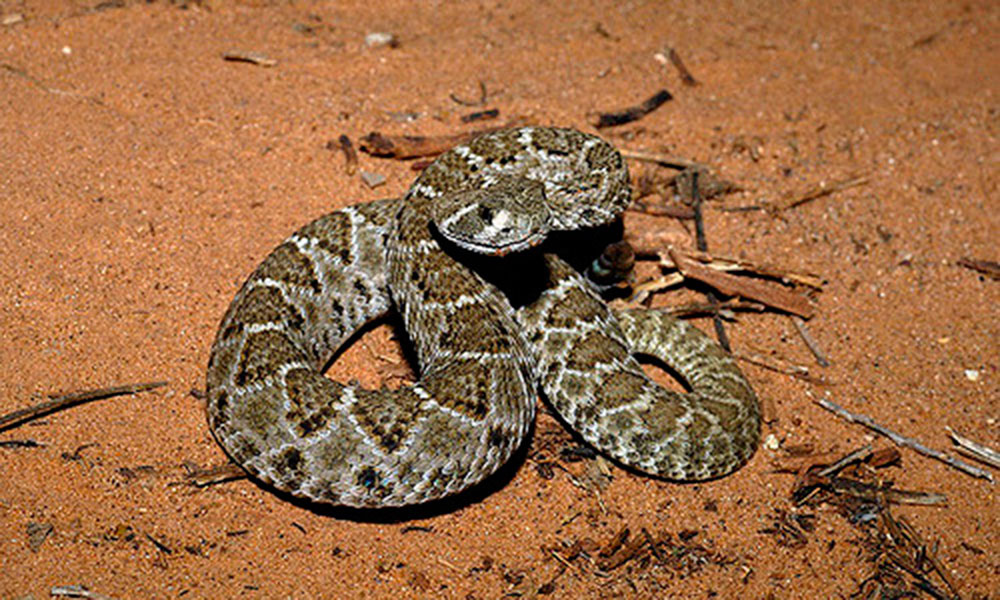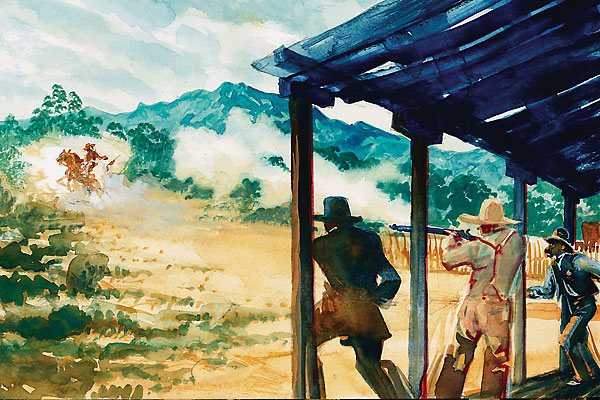
It’s the time of year when rattlesnakes are more likely to hole up during the daytime and be active at night so I thought it best to share what to do and what not to do in case of snakebite. Don’t go walking in the desert at night without a flashlight and a walking stick. It’s easier to deal with a close encounter in the dark with a stick than a firearm. I’ve had quite a few chance meetings with rattlers including a face to face meeting north of Cave Creek a few years ago. Lucky for me it was a cold October day. With me being a warm-blooded specie and he being a cold, I was able to duck faster than he was able to strike.
Recently I received a letter from a True West reader asking about a western movie where they poured gunpowder on a snakebite to cauterize the wound. There are almost as many old wives tales as there are old wives.
I’ve heard dozens of odd treatments for snakebites and most did more damage than good. Snakebites usually occurred on an extremity and folk treatment was to put a tourniquet above the bite then cut an X over the wound and attempt to suck the out poison. Another was to cauterize it with either a hot iron or pour gunpowder on the bite and light it. Another folk remedy was to put cow manure on the bite. One of the strangest suggested killing the snake and cut off the fleshy part of body and place against the wound. It was believed the venom had more affinity for the snake than the human and would return to the snake.
When climbing in the rocks don’t stick your hand someplace where you can’t see. Also when climbing don’t blindly place your head on top of a ledge and don’t raise your head over a ledge without first making sure a rattler isn’t there. When walked in a wooded area don’t step across a log but step on top of the log and check the other side.
Stay on the trail and don’t walk through a bushy area. When I was hosting “Arizona Backroads” a few years ago I asked a herpetologist let one loose so we could film it. That rattler slowly crawled under a small bush and in seconds it was completely invisible. Someone could easily step on that bush and get bitten without ever seeing the snake.
Pets can be trained to avoid rattlers so if you enjoy taking your dog on these ventures it would be a wise thing to do.
Usually, a rattler will only strike when surprised or threatened so if you are bitten the best advice I can offer for dealing with it is don’t panic, stay calm and get medical help immediately. While waiting for help lie as still as possible to lower your heart rate. The Red Cross advises victims to wash the wound if possible and apply a snug but not tight bandage to slow the flow of venom. Try to keep the wound lower than your heart. Don’t walk if possible but have someone carry you to a vehicle. Remain as inactive as possible.
Important things to avoid include: Applying a tourniquet or ice. Don’t “cut and suck” eat or take stimulants.
If the snake is dead take the body with you to the hospital so the specie can be identified. In Arizona for example there are more than a dozen different species. Let’s hope it isn’t a Mohave. Watch out for the head. A rattler can still bite from reflex action for several hours after death.
It’s said that some 7,000 people in the U.S. are bitten annually but only about five are fatal. Oftentimes it’s a dry bite but you’ll probably need a tetanus shot. That snake doesn’t plan on eating you and doesn’t want to waste its venom. The young ones are the most dangerous since they haven’t learned to measure their venom release. Rattlers are born alive and venomous. While waiting for help lie as still as possible to keep your heart from beating fast.
I’ve had quite a few encounters with rattlers and they don’t all react to humans the same way. Some are aggressive but most I’ve encountered were content to get out of your way and be left alone and I’m happy to oblige them.
Go out and enjoy our great outdoors and wilderness areas. Chances are you or your pet will never have an encounter with a rattlesnake but it’s always good to be prepared for any emergency.





